On January 19, the U.S. Department of Defense (DoD) announced the authorization of a Presidential Drawdown of security assistance to meet Ukraine's critical security and defense needs. This authorization, which is valued at up to $2.5 billion, is the Biden Administration's 30th drawdown of equipment from DoD inventories for Ukraine since August 2021. The new U.S. military aid package for Ukraine includes 59 additional Bradley Infantry Fighting Vehicles (IFVs) with 590 TOW anti-tank missiles and 295,000 rounds of 25mm ammunition and 90 Stryker Armored Personnel Carriers (APCs) with 20 mine rollers
Follow Army Recognition on Google News at this link
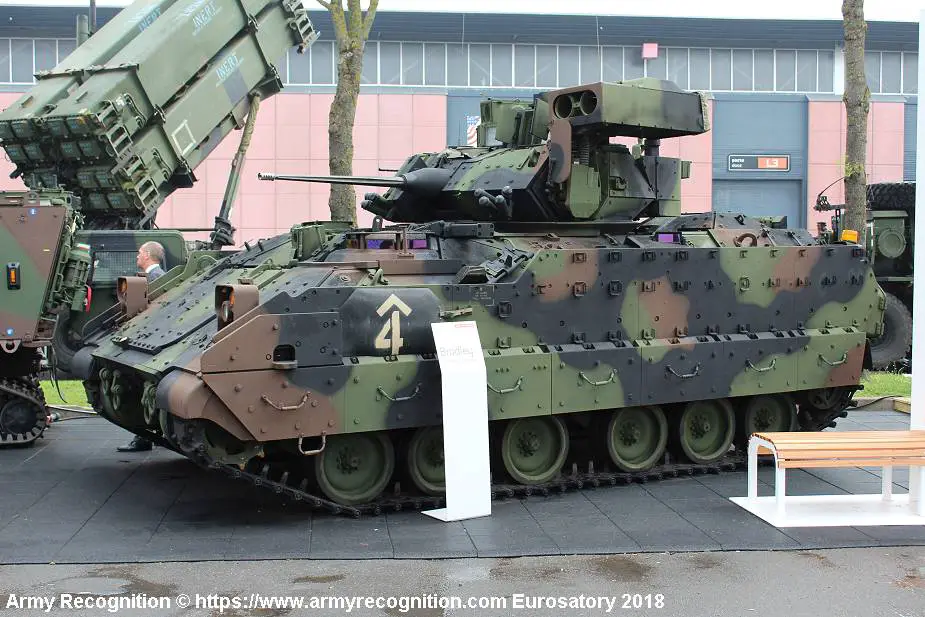
Bradley M2A2 Fighting Vehicle (Picture source: Army Recognition)
This new impressive arms package donated to Ukraine contains hundreds of armored vehicles, critical support for Ukraine's air defense, and other important capabilities including:
• 59 Bradley M2A2 Infantry Fighting Vehicles (IFVs) with 590 TOW anti-tank missiles and 295,000 rounds of 25mm ammunition;
• 90 Stryker Armored Personnel Carriers (APCs) with 20 mine rollers;
• Additional munitions for National Advanced Surface-to-Air Missile Systems (NASAMS);
• 8 Avenger air defense systems;
• 53 Mine Resistant Ambush Protected Vehicles (MRAPs);
• 350 High Mobility Multipurpose Wheeled Vehicles (HMMWVs);
• 20,000 155mm artillery rounds;
• Approximately 600 precision-guided 155mm artillery rounds;
• 95,000 105mm artillery rounds;
• Approximately 11,800 120mm mortar rounds;
• Additional ammunition for M142 High Mobility Artillery Rocket Systems (HIMARS);
• 12 ammunition support vehicles;
• 6 command post vehicles;
• 22 tactical vehicles to tow weapons;
• High-speed Anti-radiation missiles (HARMs);
• Approximately 2,000 anti-armor rockets;
• Over 3,000,000 rounds of small arms ammunition;
• Demolition equipment for obstacle clearing;
• Claymore anti-personnel munitions;
• Night vision devices;
• Spare parts and other field equipment.
The Kremlin's most recent air attacks against Ukraine's critical infrastructure again demonstrate the devastating impact of Russia's brutal war in Ukraine. This package provides additional NASAMS munitions and Avenger air defense systems to help Ukraine counter a range of short and medium-range threats and bolster Ukraine's layered air defense.
In total, the United States has committed more than $27.4 billion in security assistance to Ukraine since the beginning of the Biden Administration. Since 2014, the United States has committed more than $29.5 billion in security assistance to Ukraine and more than $26.7 billion since the beginning of Russia's unprovoked and brutal invasion on February 24, 2022.
The 59 Bradley IFVs included in this package, together with the 50 Bradleys previously committed on January 6, and the 90 Stryker APCs will provide Ukraine with two brigades of armored capability.
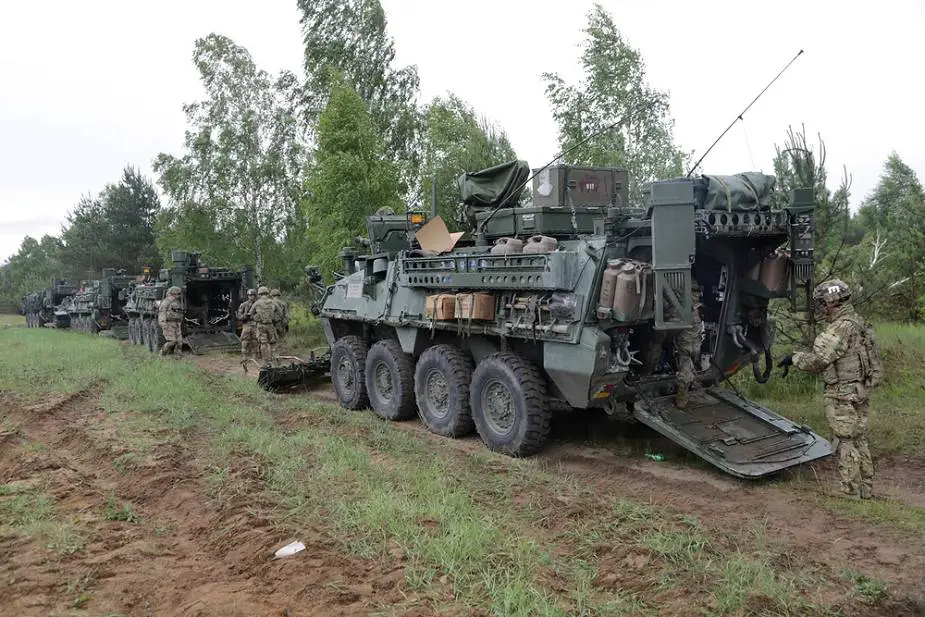
Stryker APC with mine rollers (Picture source U.S. DoD )
Reference: composition of a U.S. Army armored brigade
The brigade combat team (BCT) is the basic deployable unit of maneuver in the U.S. Army. A brigade combat team consists of one combat arms branch maneuver brigade, and its assigned support and fire units. A brigade is normally commanded by a colonel (O-6) although in some cases a brigadier general (O-7) may assume command.[1] A brigade combat team contains combat support and combat service support units necessary to sustain its operations. BCTs contain organic artillery training and support, received from the parent division artillery (DIVARTY). There are three types of brigade combat teams: infantry, Stryker, and armored.
Currently, the U.S. Army is structured around the brigade combat team. In this program, divisions that previously had not deployed individual brigades due to lack of integral support have now been restructured. The 1st Armored Division, 25th Infantry Division, etc. now have the ability to deploy one or more BCTs anywhere in the world. These BCTs are intended to be able to stand on their own, like a division in miniature. The soldiers assigned to a BCT will stay at their assignment for three years; this is intended to bolster readiness and improve unit cohesion.
Armored brigade combat team table of organization
The armored brigade combat team (ABCT) is the U.S. Army's primary armored force. It is designed around combined arms battalions (CABs) that contain both M1 Abrams tanks and M2 Bradley infantry fighting vehicles (IFVs). Other vehicles, such as HMMWVs (Humvees) and M113 armored personnel carriers, operate in a supporting role. In the future, it will also contain vehicles from the Armored Multi-Purpose Vehicle and likely the Optionally Manned Fighting Vehicle (OMFV).
An armored brigade combat team consists of seven battalions: three combined arms battalions, one cavalry (reconnaissance) squadron, one artillery battalion, one engineer battalion and one brigade support battalion. As of 2014, the armored brigade combat team is the largest brigade combat team formation with 4,743 soldiers. Prior to 2012, the armored brigade combat team was named the heavy brigade combat team.
An ABCT includes 87 Abrams, 152 Bradley IFVs, 18 M109s and 45 armed M113 vehicles.[10] The operational cost for these combat systems is $66,735 per mile. The range of the Abrams limits the brigade to 330 km (205 miles), requiring fuel every 12 hours. The brigade can self-transport 738,100 L (195,000 gallons) of fuel, which is transported by 15 19,000 L (5,000 gal.) M969A1 tankers and 48 9,500 Liter (2,500 gal.) M978 tankers.
Prior to 2016, the CAB contained two tank companies and two mechanized infantry companies. In 2016, the CAB was reorganized to have two variations; an "armored battalion" biased towards armor, with two tank companies and one mechanized infantry company, and a "mechanized infantry" battalion biased towards infantry, with two mechanized infantry companies and one tank company. The ABCTs thus adopted a "triangle" structure of two armored battalions and one mechanized infantry battalion. This resulted in an overall reduction of two mechanized infantry companies; the deleted armored company was reflagged to the cavalry squadron.
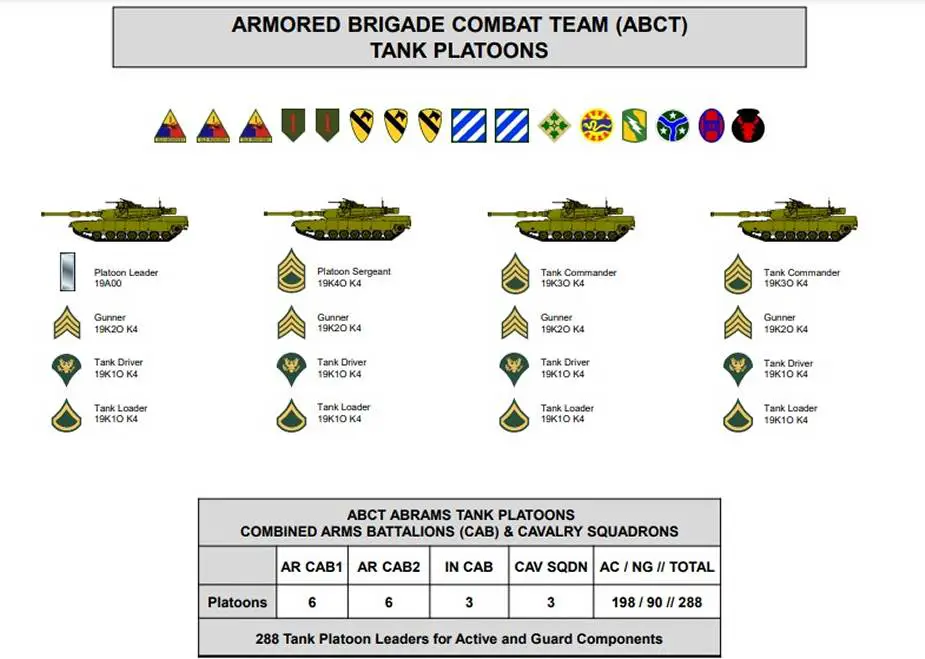
ABCT - Tank platoons (Picture source: US Army)
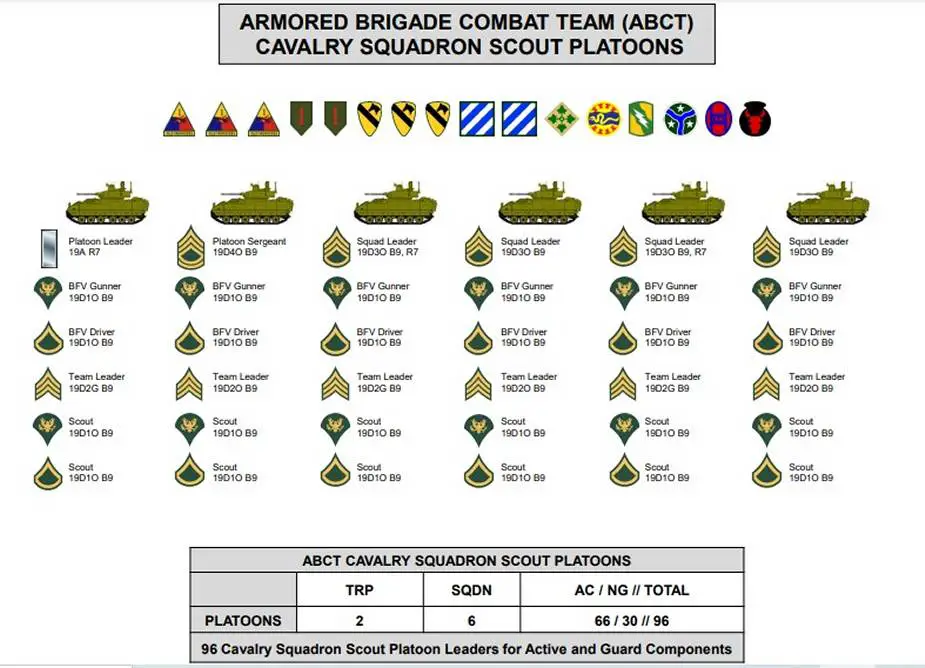
ABCT - Cavalry Squadron Scout Platoons (Picture source: US Army)
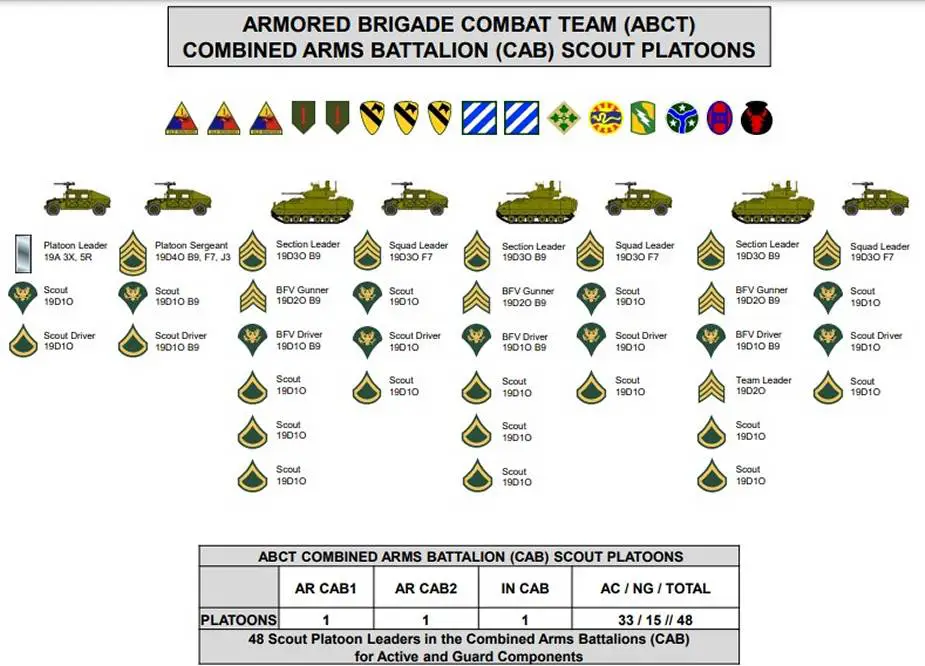
ABCT Combined Arms Battalion - Scout Platoons (Picture source: US Army)
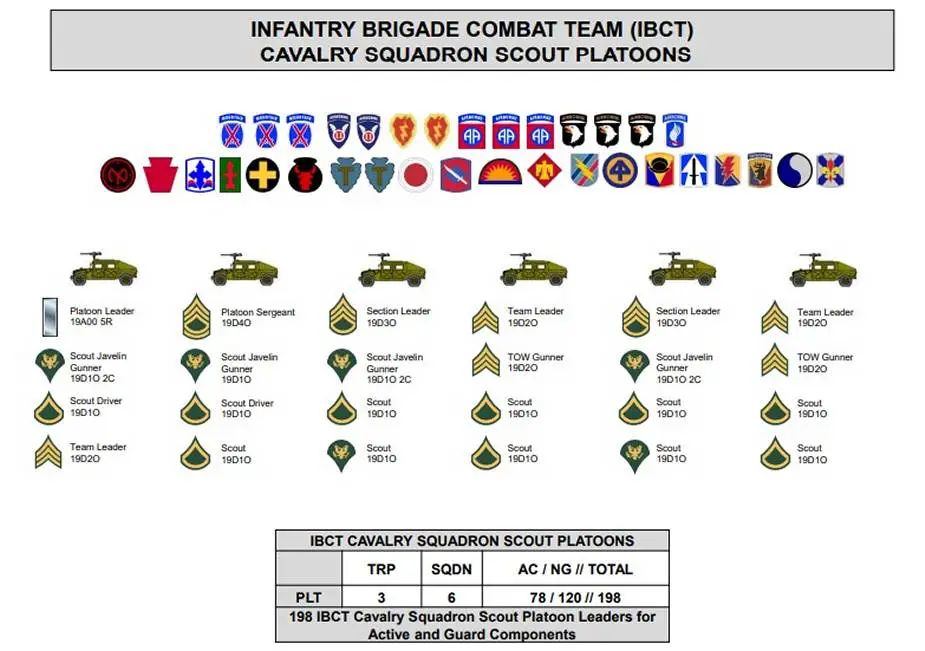
ABCT - Cavalry Scout Platoons (Picture source: US Army)
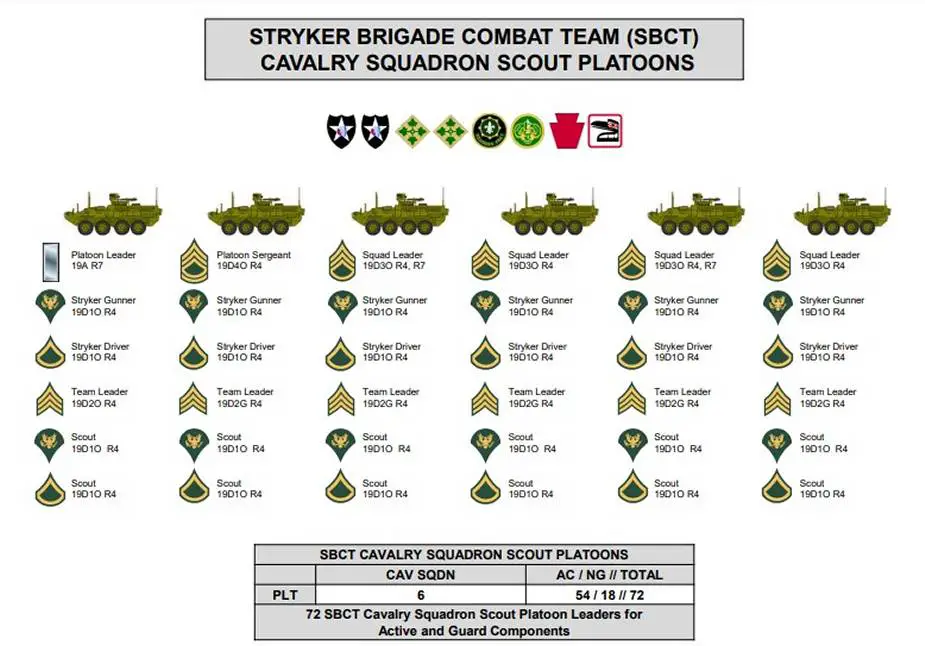
Stryker Brigade Combat Teams - Scout Platoons (Picture source: US Army)














